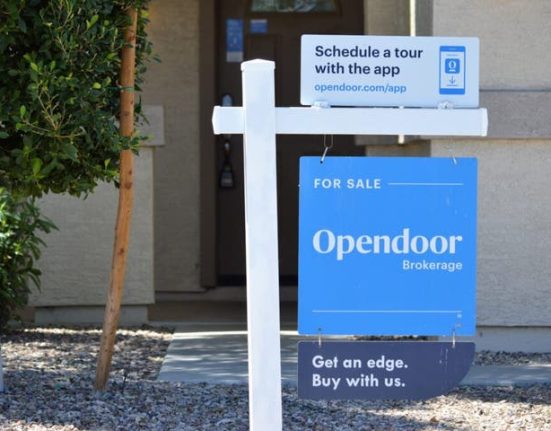Unlock the Editor’s Digest for free
Roula Khalaf, Editor of the FT, selects her favourite stories in this weekly newsletter.
The world cannot meet climate targets and ensure reliable power supplies without the rapid deployment of nuclear energy, according to the president of Holtec International, a US company developing small modular reactors (SMRs) and reopening a large-scale nuclear plant in Michigan.
Kelly Trice says nuclear energy will be “indispensable” if countries are to meet the Paris Accord — the international treaty on climate change — because it provides the type of round-the-clock power needed to stabilise national grids at a time when electricity demand is surging.
He adds that intermittent power sources such as wind and solar on their own cannot meet the demands of artificial intelligence data centres and electric cars without the backup of nuclear, which is carbon-free and provides so-called baseload power — the minimum amount needed to meet demand at all times.
“Spain had the two-day blackout. A lot of people ascribe that to the over reliance on wind and solar, as well as the instability of the grid, as a result of the ups and downs of that kind of [renewable] power,” Trice says. “The demand for power is insatiable and the result is, you don’t have a choice. Nuclear is a very viable, strong component and is indispensable, as baseload power stabilises the grid.”

Trice says SMRs, new types of reactors with a typical power capacity of 300MW or less, would help solve some of the difficult transition challenges facing governments and industry. Extending the lifespan of existing reactors and restarting mothballed ones could also help to meet surging demand, he says.
Until recently, demand for nuclear energy in western countries had flatlined because of safety concerns following the Fukushima nuclear accident in Japan in 2011, the growth in renewable energy and the rollout of natural gas power plants. But a surge in power demand from data centres, reshoring of manufacturing and electrification of transport — which is forecast to increase electricity demand in the US by 50 per cent by 2050 — and Big Tech’s commitment to cut emissions, are fuelling a nuclear investment boom.
Energy security, which moved centre stage following Russia’s full-scale invasion of Ukraine in 2022, and technology advances have also helped to rejuvenate a sector that investors had previously shunned because of delays and cost overruns on mega projects. As the US and China compete aggressively to dominate AI technologies, presidents Donald Trump and Xi Jinping are providing industry with tens of billions of dollars in government support to build additional capacity.
In September, Holtec was awarded a $1.5bn federal loan to help fund the restart of the Palisades nuclear power plant in Michigan, which was mothballed in 2022. If it is successful, it will mark the first time a nuclear power plant in the US has been restarted after being shut down for decommissioning.
“We are on schedule and under budget,” says Trice, adding that the Palisades plant should reopen in the fourth quarter of 2025 following repairs to equipment, safety checks and regulatory approval.
He says reopening existing nuclear plants and extending their lifespan is much cheaper than building new facilities, and that Palisades has a total budgeted cost of $2.2bn. The project should come in under budget by several hundred million dollars, says Trice, adding that Holtec plans to place two SMRs at Palisades, which should almost double its 800MW capacity.

Holtec is one of dozens of companies developing more than 80 different SMR designs globally. As these reactors are modular, it means most of their components can be built in factories and assembled on site. So far China and Russia have built a handful of SMRs and the first western designs are expected to be deployed by 2030.
Nuclear advocates expect the smaller scale and more advanced technology in SMRs to reduce the risk of budget overruns and delays, which have blighted large-scale nuclear projects in recent years.
The last two large-scale nuclear reactors built in the US, at the Vogtle power plant in Georgia, were completed seven years late and $17bn over budget. In Britain, EDF’s Hinkley Point nuclear power plant project is forecast to cost £46bn, up from an initial estimate of £18bn.
Holtec’s SMR-300 design is a pressurised light-water reactor that will produce at least 300MW of electric power on a small parcel of land. Unlike most traditional nuclear power plants that require large quantities of water, the SMR-300 can be adjusted to use an air-cooling system to produce reliable heat and power in arid environments.
£46bn
Projected final cost of UK’s Hinkley Point nuclear power plant, up from £18bn initial estimate
The company plans to start construction of its first SMRs at its plant in Camden, New Jersey, later this year, says Trice, adding that it has plans to build fleets of SMRs in the US, Europe and Asia.
Holtec, which is a private company that specialises in nuclear fuel storage, transport and decommissioning, still faces a significant financing challenge to realise its ambition of deploying a global fleet of SMRs. Trice says the company is in advanced negotiations with International Holdings Company, an Abu Dhabi-based investment fund, over a potential $10bn fundraising.
“The deal is in serious negotiations. We intend to do it and I believe we will consummate the deal before the year is out,” Trice says.







